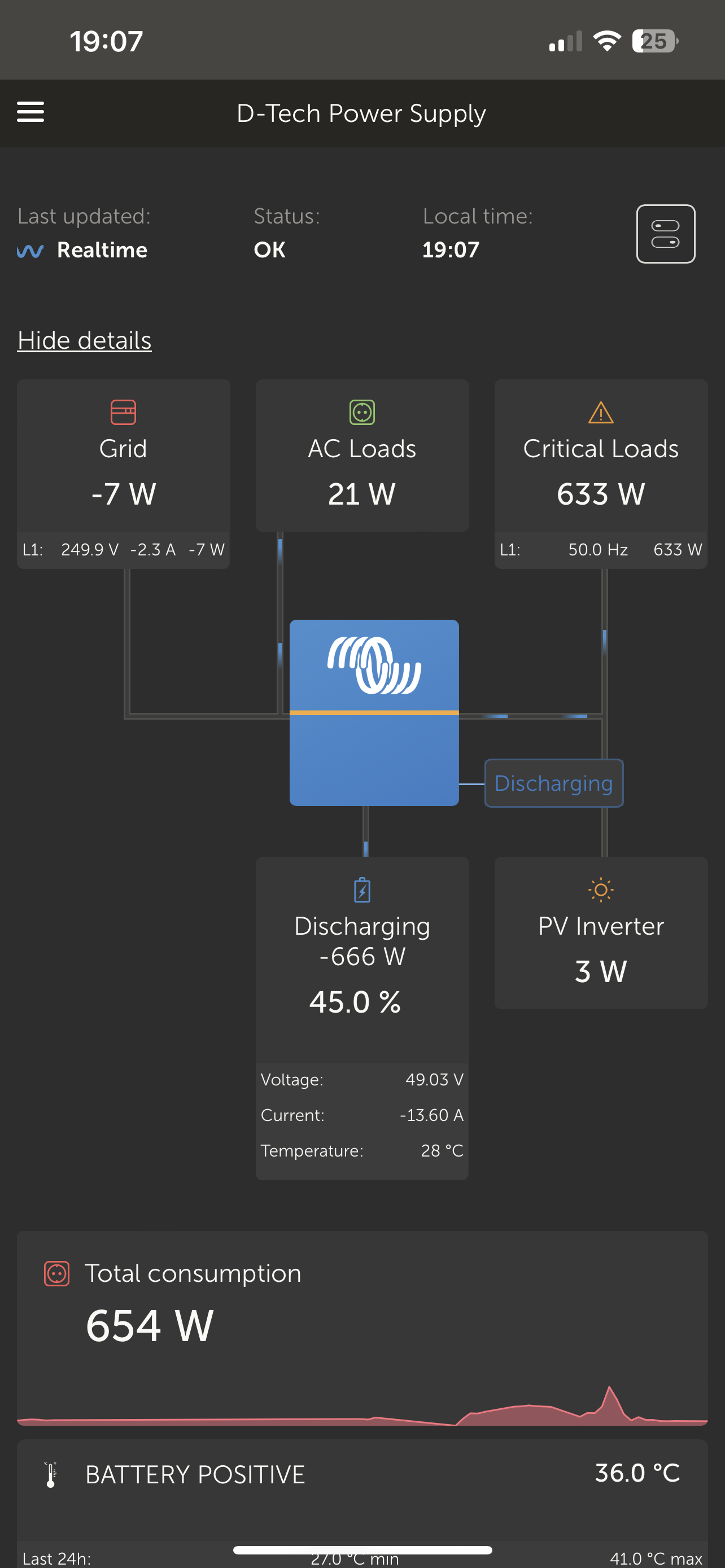Hi I keep getting RCD tripping on the input side of the multiplus2 I have 50amp MCB that feeds a 30mA RCD to the inverter everything in the house is connected to Ac out 1, the whole house has its own RCBO’s on every circuit which are working normally.
when the inverter is turned on and loaded up with over half of the circuits it trips out, no matter what sequence or starting position on the board I use. My system is a TT system not connected to the DNO at all for earth. The system isn’t overloading as when testing everything I could in the house loaded I only drew 48amps, but my dryer and washing machine are not on my output side now they have been moved to grid side.
Im on the assumption that loading all the circuits the RCD is seeing 30mA on the whole install so tripping. has anyone else had this and fixed it I assume it’s a higher rated RCD is the fix but would like to hear from others that had the issue.

